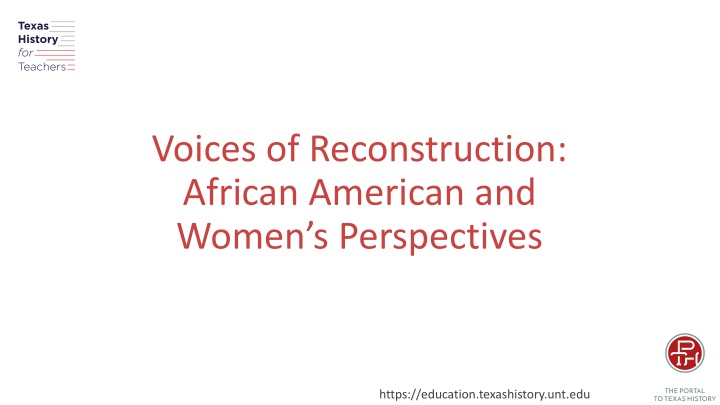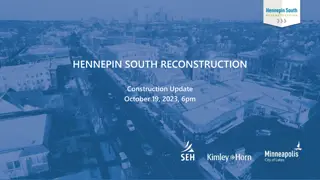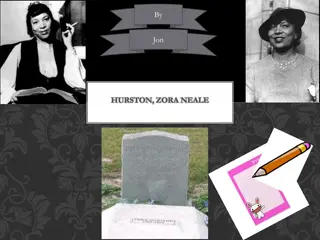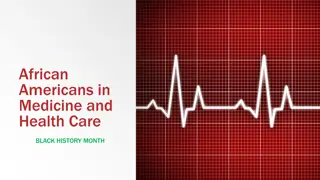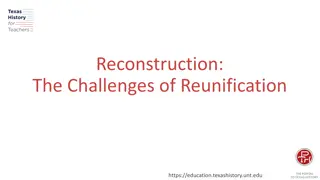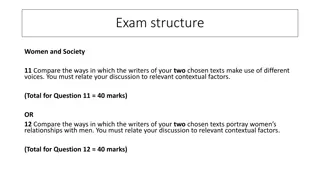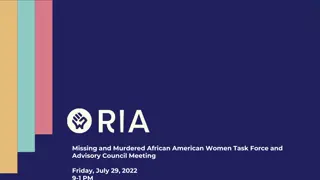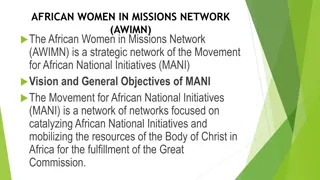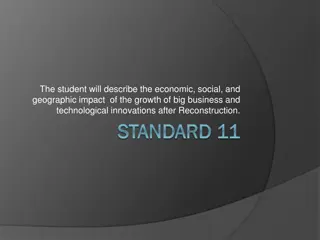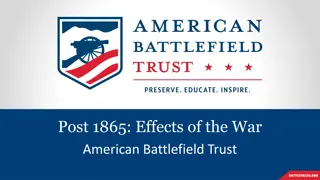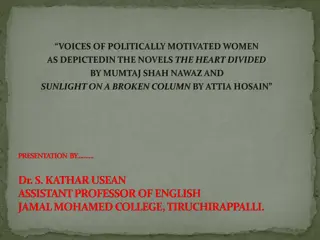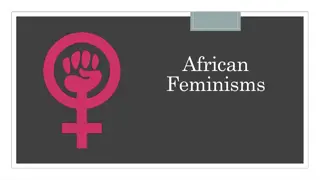Voices of Reconstruction: Perspectives of African American and Women in Texas
Explore the impact of African Americans and women in Texas during the Reconstruction period through the lens of political, economic, and social influencers. Learn about African American legislators, the Freedmen's Bureau, and women's suffrage movement in Texas, shedding light on their contributions and challenges faced. Discover primary sources reflecting the struggles and progress made by these communities in shaping Texas' history.
Download Presentation

Please find below an Image/Link to download the presentation.
The content on the website is provided AS IS for your information and personal use only. It may not be sold, licensed, or shared on other websites without obtaining consent from the author.If you encounter any issues during the download, it is possible that the publisher has removed the file from their server.
You are allowed to download the files provided on this website for personal or commercial use, subject to the condition that they are used lawfully. All files are the property of their respective owners.
The content on the website is provided AS IS for your information and personal use only. It may not be sold, licensed, or shared on other websites without obtaining consent from the author.
E N D
Presentation Transcript
Voices of Reconstruction: African American and Women s Perspectives https://education.texashistory.unt.edu
Essential Questions: 1. In what ways do individuals impact a society? 2. How did African Americans influence events and issues in Texas during the period of Reconstruction? 3. How did women influence events and issues in Texas during the period of Reconstruction? https://education.texashistory.unt.edu
Organize Your Notes and Key Points Political Influencers & Contributions Economic Influencers & Contributions Social Influencers & Contributions
African American Legislators in Texas Reconstruction marked the first time in American history that many African Americans would be allowed to vote and take seats in office. During this period three African Americans were elected to the Texas Senate and thirty-two others were elected to serve in the Texas House of Representatives. These legislators worked to advance education, secure voting rights, and to secure full liberties for African Americans. Three African American legislators elected in 1869. George Ruby elected Senator (left), Matt Gaines elected Senator (middle), Walter Moses Burton elected Sheriff (right). https://education.texashistory.unt.edu
Freedmans Bureau Think- -Pair Using the guided questions, analyze the primary source images to answer the document analysis questions. Think Pair- -Share Share Support your claims using evidence. Document Analysis Questions: 1. Based on Section XIII of the document, what is the Commissioner of the Bureau responsible for? 2. What information must the Superintendent provide upon request? 3. Why might the government need to order these kinds of updates on the status of schooling for African Americans in Texas? https://education.texashistory.unt.edu
Womens Rights in Texas Prior to the Civil War, women across the nation, including Texas, were politically activated around the issue of abolition. Many women abolitionists would later develop ambitions to expand basic liberties to women. Texas women played a role in the women s suffrage movement that began during the period of Reconstruction. Women sought to fight back against discrimination and abuse based on sex. The goal of women s suffrage was to obtain equal rights and protection under the law for women, including the right to vote. It was through the work of early Texas suffragists like Mariana Thompson Folsom and Martha Goodwin Tunstall in the 1870s and 1880s, that Texas women would later have a role in the national women s suffrage movement. Martha Goodwin Tunstall was a leading woman s suffrage supporter in Texas during the period of Reconstruction. https://education.texashistory.unt.edu
Advancing Education in Texas Following the Civil War, the Freedman s Bureau established schools and taught both children and adults. These schools were protected by government orders and the military was often used to ensure that the schools operated. During Reconstruction, the Freedmen s Bureau succeeded in establishing 66 schools throughout Texas, of which 43 were owned by African Americans. During Reconstruction, many women, both white and African American, began to teach in schools for African Americans. By the end of Reconstruction, the Freedmen s Bureau employed 63 teachers and enrolled 3,248 African American students in Texas. https://education.texashistory.unt.edu
Higher Education in Texas During the time of Radical Republican leadership, many African- Americans were elected or appointed into political positions. A major focus for many African American officials took steps to increase access to higher education for Africans Americans: Representative Meshack Roberts - established Wiley College, the first college-level school for African Americans west of the Mississippi. Senator Matthew Gaines - Supported the Free School Bill that helped finance an agricultural and mechanical college (now Texas A&M University), the first publicly supported state institution of higher education. Representative William Holland Father of Prairie View A&M University introduced the bill to convert Alta Vista Institute into Alta Vista Agricultural College and a year later into Prairie View Normal College (a school for teachers). Representative Thomas Beck fought to protect funding for Prairie View University in 1880 when threatened by the state. "Junior Class, Texas Normal School for Negroes." Prints and Photographs Collection, Texas State Library and Archives Commission. https://education.texashistory.unt.edu
Churches The church was the center of the community for many African Americans during and after Reconstruction. The church was a place of worship and often served as a school, meeting house, and place to host social events, and political gatherings. Men of the church would often organize and sponsor benevolent and fraternal societies. Black ministers played a major role in their communities, often advocated for political rights and the advancement of their communities. In many cases ministers ran for public office and churches hosted political events. Women were also key in the development of churches in Texas, as they often hosted fundraising events and social gatherings. [African-American Church, Harrison County], photograph, Date Unknown; (https://texashistory.unt.edu/ark:/67531/metapth18164/: accessed May 4, 2022), University of North Texas Libraries, The Portal to Texas History, https://texashistory.unt.edu; crediting Marshall Public Library. https://education.texashistory.unt.edu
Women in Business Women played a major role in rebuilding the economy of Texas following the Civil War. With many men off to war, women had the responsibility to take care of things on the home front such as tending to farms, maintaining homes, and finding ways to bring income to their families. Some women became prosperous land and business owners during this period. Lizzie Johnson was one of the most successful cattle dealers and real estate investors in Texas following the Civil War and during Reconstruction. Sarah Cockrell built the first iron bridge across the Trinity River in Dallas. https://education.texashistory.unt.edu
Apply your knowledge: Apply your knowledge: Think - Pair - Share Using the lesson essential questions discussed at the beginning of the lesson and your newly gained perspective about the key contributors of Reconstruction, answer the following questions using text evidence. Use notes and activities from this lesson to support your thinking process. Essential Questions - Exit Ticket 1. In what ways can individuals or groups impact a society? 2. How did African Americans influence events and issues in Texas during the period of Reconstruction? 3. How did women influence events and issues in Texas during the period of Reconstruction? https://education.texashistory.unt.edu
